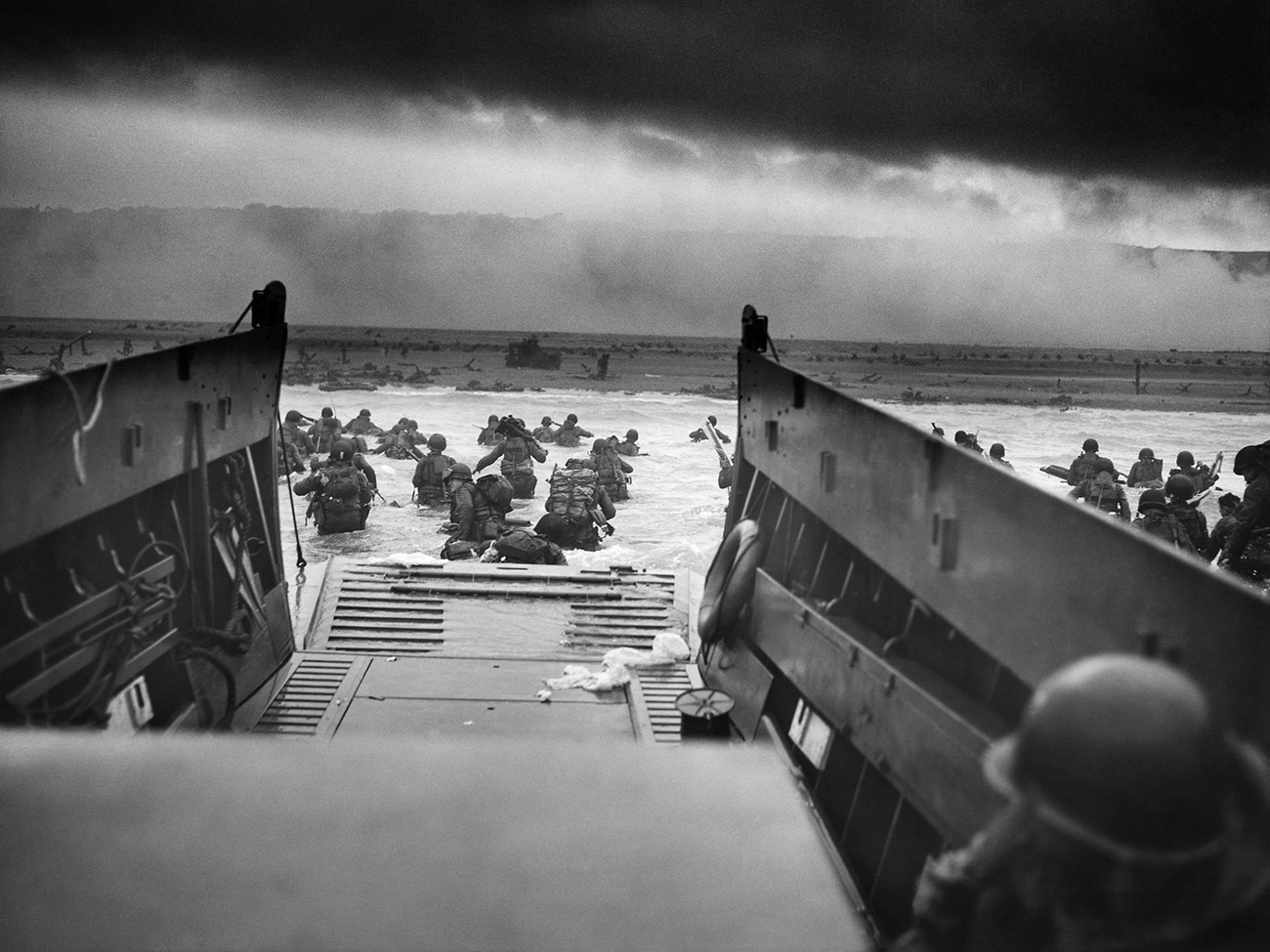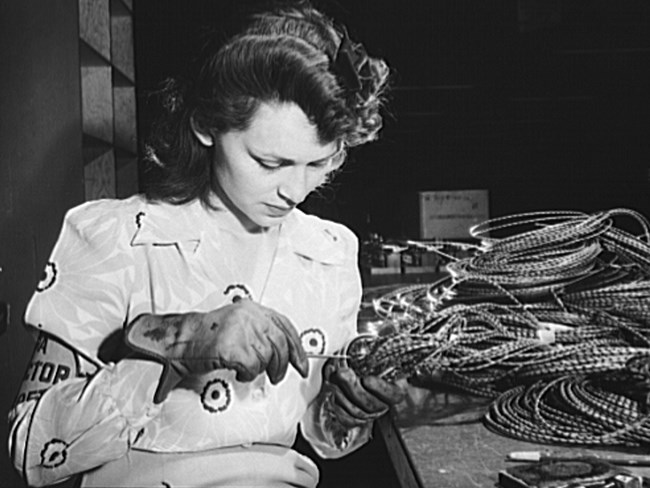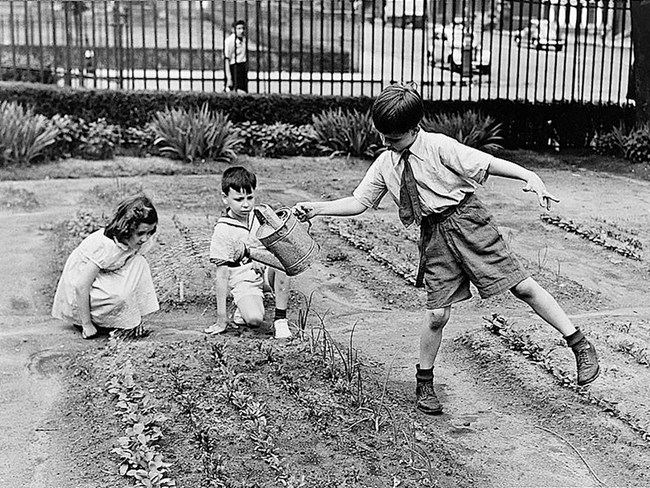Last updated: January 22, 2021
Article
World War II

National Archives & Records Administration
This generation of Americans has a rendezvous with destiny.
_______________________
President Franklin D. Roosevelt
World War II was the defining moment of the twentieth century, a time when life and liberty were being extinguished around the world, and civilization itself was in peril. America responded, uniting as never before or since in a common purpose to defeat the forces of evil and the spread of totalitarianism.
Sixteen million Americans served in uniform, mostly boys in their late teens and early twenties who joined U.S. allies in fighting the largest, costliest, and bloodiest war in human history—a global cataclysm that involved 56 nations. They earned their manhood at Normandy, Salerno, Midway, Guadalcanal, and Iwo Jima, and in the skies over Europe and the Pacific. More than 400,000 lost their lives.

Library of Congress
Women enlisted for non-combat duties—400,000 strong: Army WACs, Navy WAVES, Coast Guard SPARs, Marine Corps Women’s Reserve, and the Army and Navy Nursing Corps. They served in every theater of the war. The majority were nurses, but many served in non-traditional roles such as control tower operators, aviation mechanics, flight instructors, and pilots who ferried planes from factories to stateside military bases.
More than 1.2 million African Americans served in the military. Among the crews and units whose patriotism and bravery helped bring victory were the 761st “Black Panther” Tank Battalion—the first African American tankers to fight in the American Army; the 99th Fighter Squadron and 332nd Fighter Group—the first African American military airmen, better known as the Tuskegee Airmen; and the all African American crew of the USS Mason.
Native Americans played a vital role in the outcome of the war. Four hundred Navajo Marine “code talkers” created a system of native words to represent important military terms. Each code talker memorized these special words so there would be no written materials to capture. The code provided a means for secure communications among American forces in the Pacific and was never broken by the Japanese.
Despite the devastating internment of more than 100,000 of their relatives, many Japanese Americans volunteered for service and made up the 100th Army Battalion, which was later merged into the all Japanese American 442nd Regimental Combat Team (RCT).
The 442nd fought in some of the fiercest and bloodiest campaigns of the European theater. It received more medals than any other unit in U.S. military history: some 18,000 decorations, including 9,000 Purple Heart medals.

Library of Congress
Back home, civilians of every age and background mobilized to support the troops, each other, and the cause of freedom. Factories ran three shifts, 24 hours a day, seven days a week. The labor force was expanded by 18.7 million people, thanks in good part to the addition of some six million women who abandoned their homemaking roles and flocked to war plants to produce ships, tanks, planes, ammunition, and weapons. “Rosie the Riveter” became an icon of women’s contributions on the home front. By 1945, women made up 36 percent of the nation’s total workforce. When the war ended, President Roosevelt’s “great arsenal of democracy” had produced 296,601 aircraft, 71,060 ships, 86,388 tanks, and immeasurable quantities of guns and ammunition. American farmers performed their own miracles. Even though the farm labor force decreased 10 percent because of the military and industrial buildup, increases in livestock and crop output resulted in 36 percent growth in farm productivity during the war. “Sunday” farmers planted some 20 million “victory gardens” to provide additional food.
No household was unaffected by the war. Rationing and shortages were a grim reality: butter, gasoline, textiles, meat, shoes, automobiles, tires, and refrigerators—the list went on and on. Consumers endured long lines and had to bargain for scarce commodities. Ration stamps became a type of currency, and lost ration books a major headache. The government prohibited nearly all non-military construction, and housing became extremely scarce and badly maintained because of a lack of materials. To help foot the bill for the war, Americans paid higher taxes and bought some $6 billion worth of war bonds.

National Archives & Records Administration
Our debt to the heroic men and valiant women in the service of our country can never be repaid. They have earned our undying gratitude. America will never forget their sacrifices.
_______________________
President Harry S. Truman
When peace came, the world was a very different place. The enormous military struggle to preserve freedom and the sacrifices at home and abroad that led to victory left a legacy that forever transformed America and the world. From the role of women and African Americans to the use of technology and America’s obligations as a superpower, World War II was a watershed event that redefined the social, economic, and political landscape of the nation. Globally, the victory began a march toward freedom and democracy in countries around the world—a march that continues today. The United States abandoned its historic isolationist policy and assumed a leadership role in the Free World.
The United Nations was born in 1945, and the General Assembly adopted the Universal Declaration of Human Rights in 1948. World War II was, indeed, a defining moment. It marked America’s coming of age.
Essay by Thomas B. Grooms, U.S. General Services Administration
Tags
- home of franklin d roosevelt national historic site
- world war ii
- franklin d. roosevelt
- harry truman
- fdr
- victory garden
- women at war
- black panther
- tuskegee airmen
- japanese american
- japanese american internment
- native american
- rosie the riveter
- ration
- united nations
- universal declaration of human rights
